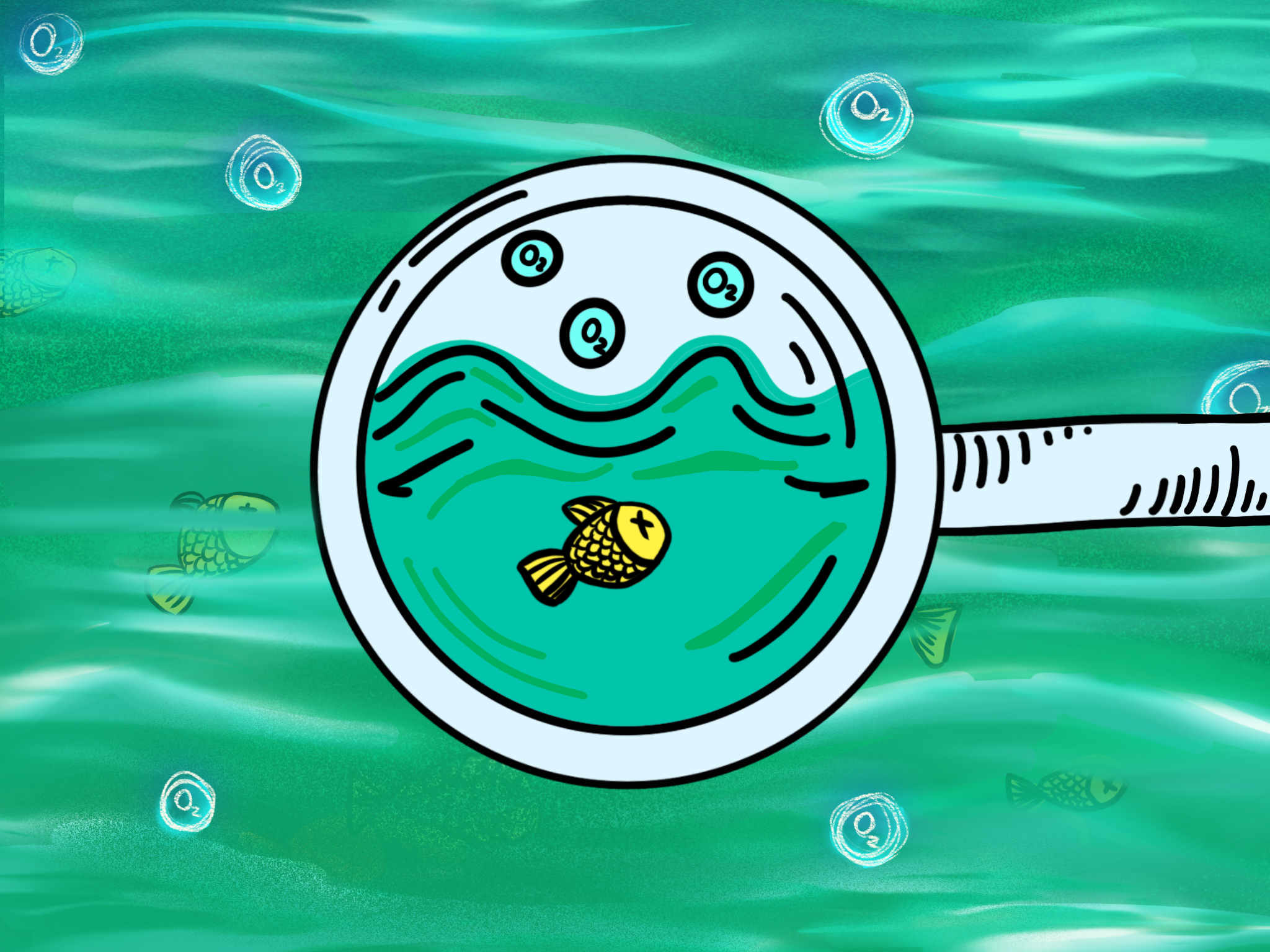Eutrophication
Fedora Liu ’24
Christine Wu ’25
Over the past 50 years, eutrophication has risen as one of the leading processes of concern contributing to both water quality deterioration and a depletion in dissolved oxygen in large bodies of water. Before examining the significance of eutrophication, a simplified understanding of the science must be first established.
In essence, eutrophication is the acceleration of plant growth, particularly seen through algal blooms, in a body of water. While eutrophication is a natural process itself, human activities dramatically accelerate its progression. Eutrophication begins due to an abundance and accumulation of nutrients in lakes or other bodies of water. Nutrients, in this sense, refers to any chemical elements found in the sustenance which plants and animals need for survival. Primary examples of such include phosphorus (an element vital for plant growth) and nitrogen (one of the building blocks of chlorophyll and amino acids); the presence of both these nutrients is necessary in the instigation of eutrophication. These nutrients find their way to natural bodies of water commonly through the runoff of chemical fertilizers, sewage, manure, industrial sources, and even fossil fuel sources.
Whilst the presence of such nutrients is ideal to naturally nurture aquatic plants, an overabundance dramatically stimulates plant growth and damages ecosystems. Since oxygen is a vital component in plant growth, the excessive population of aquatic plants quickly exploits the dissolved oxygen in a body of water, making it hypoxic (low oxygen). Indeed, one of the most severe consequences of eutrophication is hypoxia, the process of immense oxygen depletion due to the not only the sustainment of aquatic plants, but also oxygen usage by aerobic bacteria as the overabundant population of such plants are being decomposed. Furthermore, manifestations of eutrophication like algal blooms also prevent sunlight from penetrating the water’s surface. As most living organisms depend on oxygen and sunlight to live, few can survive in such regions; consequently, another name for an hypoxic region is a “dead zone”, implicating the lack of life caused by eutrophication.
The abrupt rise in intensive agricultural and industrial practices directly contributes to the growing issue of eutrophication in the modern day, affecting mostly the Eastern coasts of the US, the coastlines of Baltic states, Japan, and the Korean Peninsula. Whilst there were only 10 documented cases of hypoxia in 1960, at least 169 instances were recorded in 2007. The impacts are devastating; the most obvious and concerning being the collapse of ecosystems, and thus, the biodiversity of a region. As all of life is one vastly intertwined structure of systems, eutrophication also influences humanity through disrupting tourism, recreation, the local economy, and touches our collective moral consciousness — as with any other human-caused environmental tragedy.
References
Admin. (2022, May 30). Eutrophication. BYJUS. Retrieved May 1, 2023, from https://byjus.com/chemistry/eutrophication/
Dead Zone. National Geographic. (n.d.). Retrieved May 1, 2023, from https://education.nationalgeographic.org/resource/dead-zone/
Eutrophication and Hypoxia. World Resources Institute. (n.d.). Retrieved May 1, 2023, from
https://www.wri.org/initiatives/eutrophication-and-hypoxia/learn
Functions of Phosphorus in Plants. IPNI. (n.d.). Retrieved May 2, 2023, from
Libretexts. (2020, July 14). Background. Chemistry LibreTexts. Retrieved May 1, 2023, from
Nitrogen - Nutrient Management. Mosaic Crop Nutrition. (n.d.). Retrieved May 1, 2023, from
https://www.cropnutrition.com/nutrient-management/nitrogen
Nutrients and Eutrophication. Nutrients and Eutrophication | U.S. Geological Survey. (n.d.). Retrieved May 1, 2023, from
